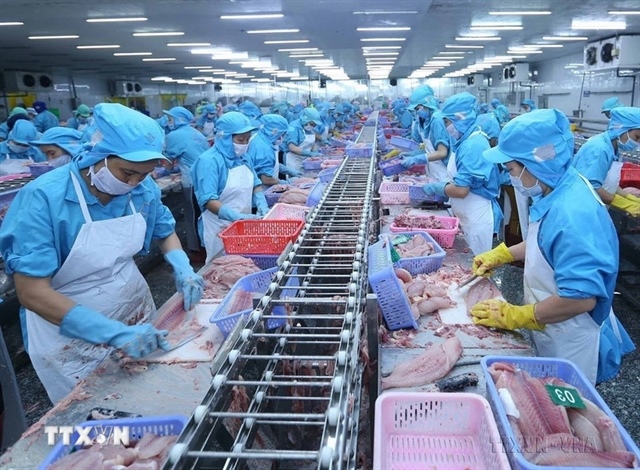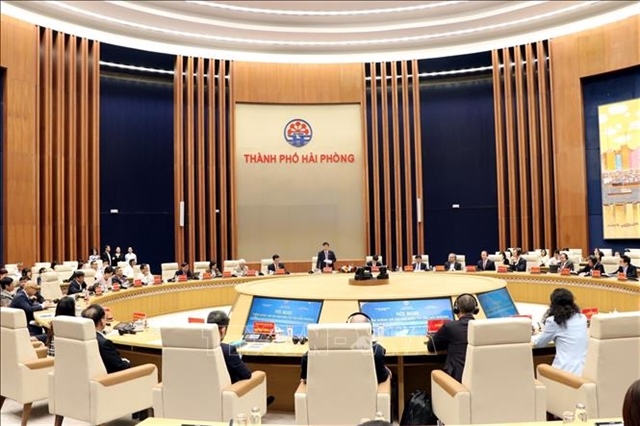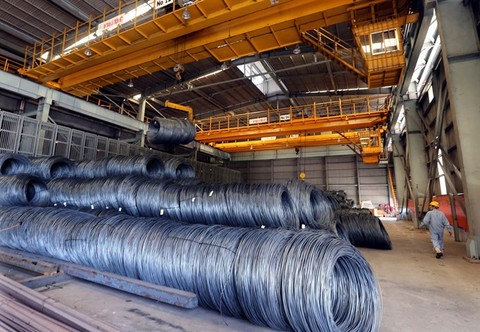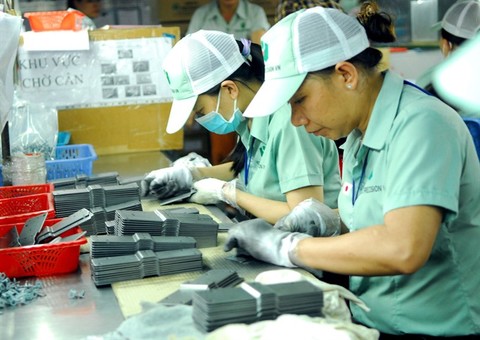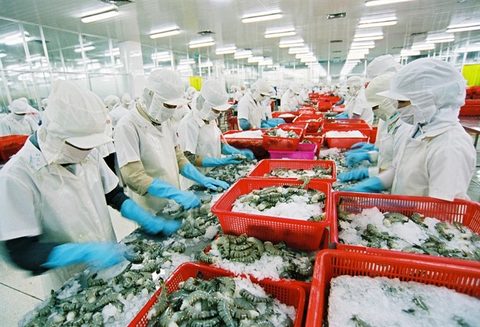VN logistics firms must compete globally
VN logistics firms must compete globally
Vietnamese logistics firms must work to improve their competitiveness, said Minister of Industry and Trade Tran Tuan Anh at the Viet Nam Logistics Forum 2017 in Ha Noi on Friday.

In his speech, Anh noted that logistics should be considered an “infrastructure service sector”, adding that the domestic industry is facing difficulties including loose co-ordination among relevant sectors, weak transport and IT infrastructure, and a shortage of qualified human resources.
He asked participants at the forum to propose solutions to help the sector develop in a sustainable manner, thus contributing to renovating the growth model and restructuring the national economy. Anh urged ministries, sectors and localities to co-operate. He said they should focus on building and upgrading the transport and IT infrastructure network and logistics centres in connection with key economic areas, other countries in the region and the larger world. Ministries and sectors were required to look for ways to improve the quality of human resources to meet the requirements of the logistics sector in the context of international economic integration.
Challenges ahead
According to Ousman Dione, Country Director for the World Bank in Viet Nam, Viet Nam’s logistics cost is 18 per cent of GDP, almost twice the ratio of developed economies and 4 per cent higher than the global average rate. He said while the country is emerging as a global industrial centre and one of the most attractive destinations for foreign direct investment (FDI), attracting about US$35 billion in registered capital in 2017, Viet Nam is still doing the work with the least added value in the global value chain. Therefore, Viet Nam needs a solution to improve export efficiency towards its vision to become an upper middle income country.
He said that while significant progress has been made in improving logistics infrastructure and services, there was still ample room for further improvement. Viet Nam’s ranking in the Logistics Performance Index dropped from 48 in 2014 to 64 in 2016. During the same period, other economies improved their performance much faster than Viet Nam, meaning it is losing competitiveness.
The country’s consistent policy of openness and export-led growth has paid off. However, Viet Nam often carries out the lowest value-added segment of production in global value chains.
Export performance remains largely driven by the FDI sector, which accounts for 70 per cent of total exports. Links between domestic firms and global value chains are weak.
Dione noted that the Vietnamese Government and the private economic sector need to outline a specific roadmap to improve the quality of logistics service, thus meeting demand of the country’s increasingly modern economy. The WB is ready to support Viet Nam in developing and improving competitiveness of the country’s logistics industry, he affirmed, adding that the bank will provide technical and financial assistance for Viet Nam as well.
High on the agenda at the forum was improving competitiveness and the development of Viet Nam’s logistics services.
“Viet Nam’s total logistics costs in 2016 were $41.26 billion, equivalent to 20.8 per cent of GDP,” said Le Duy Hiep, chairman of the Viet Nam Logistics Business Association (VLA).
Hiep said that despite high logistics costs, the logistics sector has contributed a mere 3 per cent to GDP. The number of logistics enterprises in Viet Nam has grown rapidly from 700 in 2005 to more than 1,200 in 2012 with an annual service growth rate of 16-20 per cent.
At present, about 30 businesses providing trans-national logistics services are operating in Viet Nam and the country has 1,300 logistics firms total.
“However, Viet Nam is faced with several challenges such as poor logistics infrastructure and lack of uniformity, small-scale logistics enterprises, with fragmented operations and lack of professionalism and low competitiveness overall,” he added.
He said that the country has also suffered from limited international maritime and air transport as well as other services due to a shortage of global systems.
The majority of 1,300 Vietnamese logistics firms are small- and medium-d, accounting for only 25 per cent of the logistics market share and about 72 per cent of the logistics labour force. They mostly provide small supply chain services in Viet Nam including freight forwarding, warehouse leasing and customs clearance.
In the framework of the forum, the Ministry of Industry and Trade officially released the Viet Nam Logistics Report 2017 and inaugurated a portal at www.logistics.gov.vn.
The report provides a close look at the inherent vantage points and dynamics of international markets, revealing Viet Nam logistics sector’s great potential for growth and deep integration in the global logistics arena. The report suggests that in 2018, more focus should be paid to enhance administrative reforms, reduce or simplify logistics-related administrative procedures and accelerate key logistics infrastructure projects.
Authorities, associations and businesses should also look at embedding regional integration and partnership efforts in market liberalisation, expanding existing logistics training systems, increasing communication and further perfecting the regulatory framework and public sector management system to support logistics development. The forum also witnessed the signing of five strategic and comprehensive co-operation agreements among enterprises, associations and universities, which aim to create breakthroughs in logistics development.


